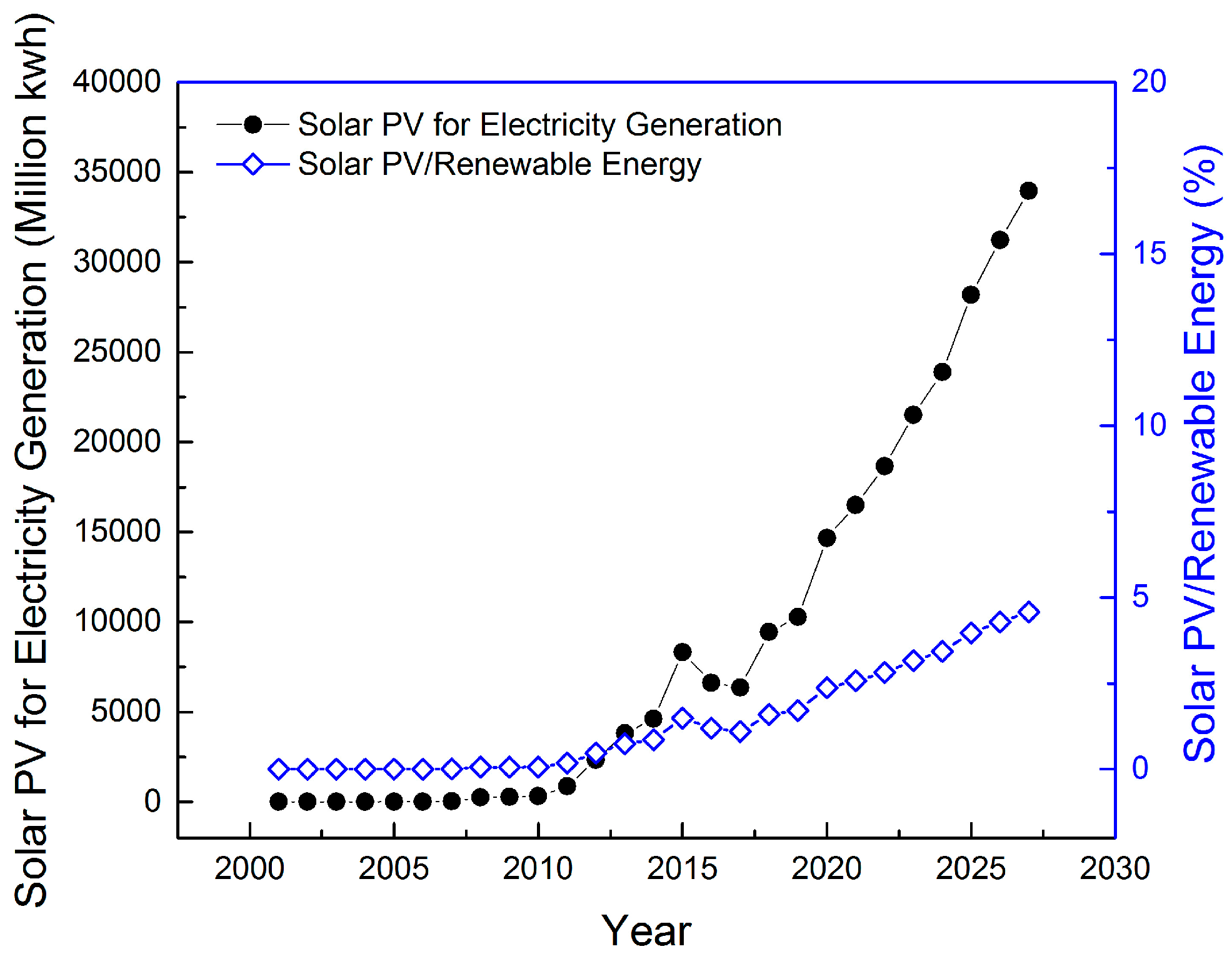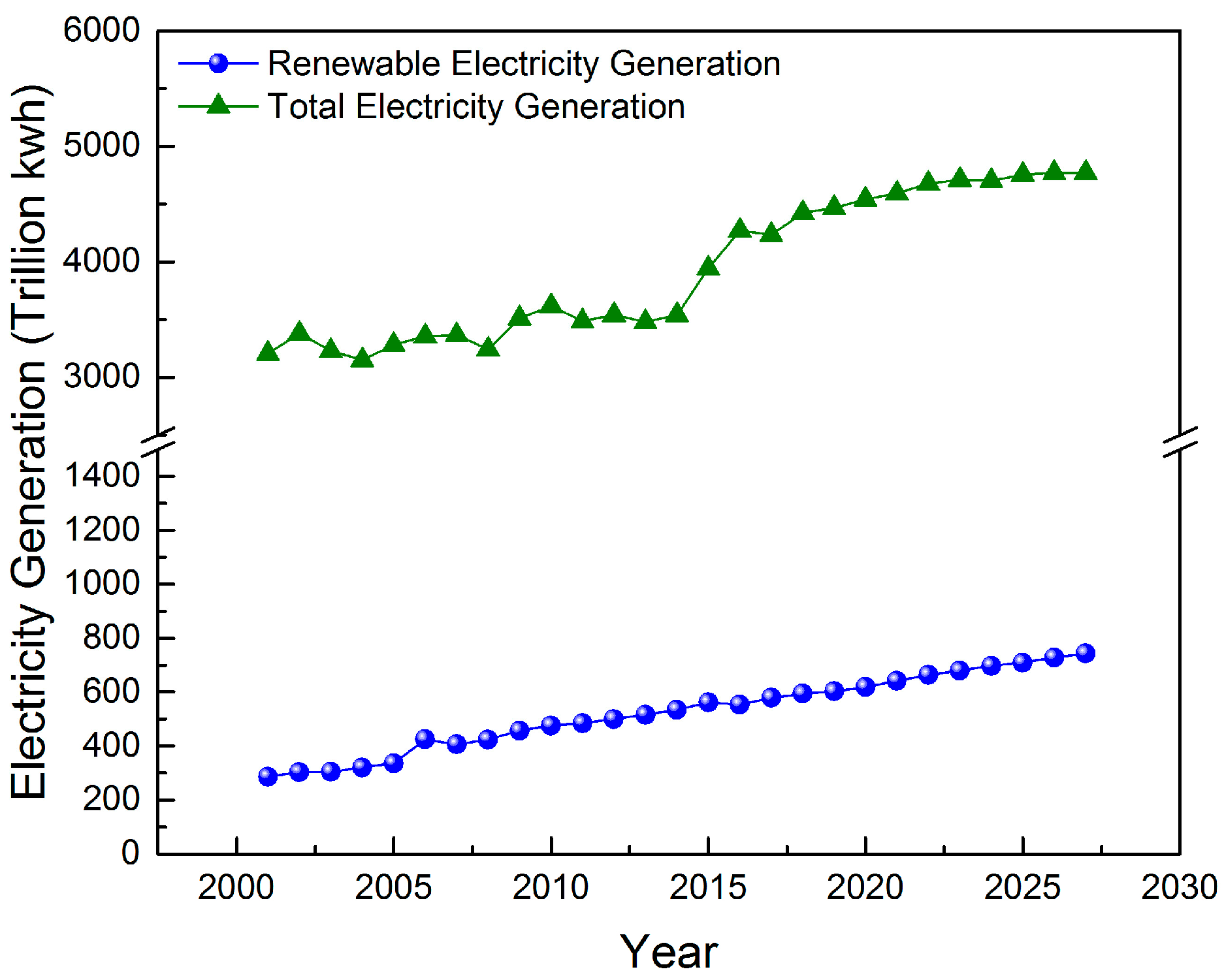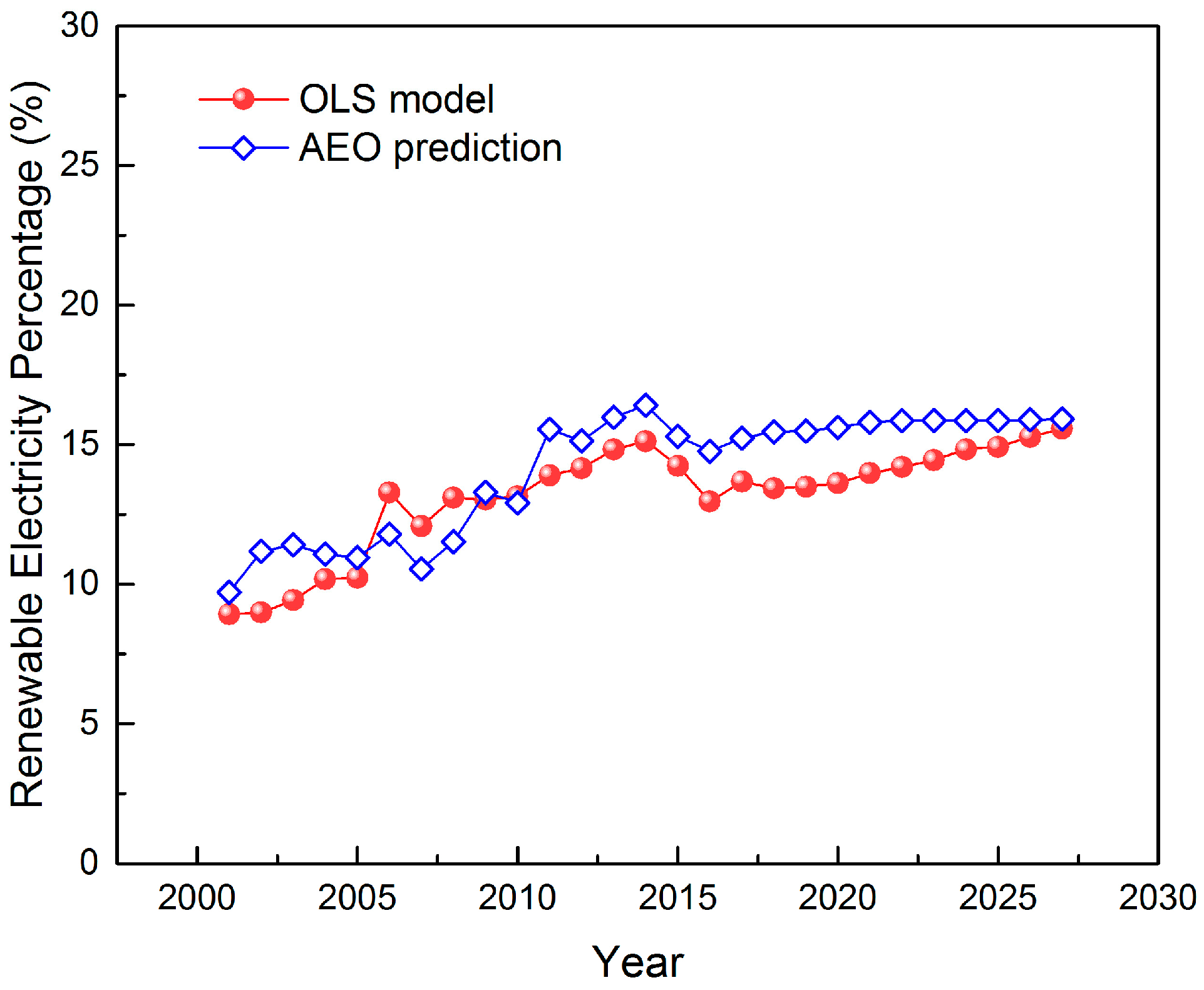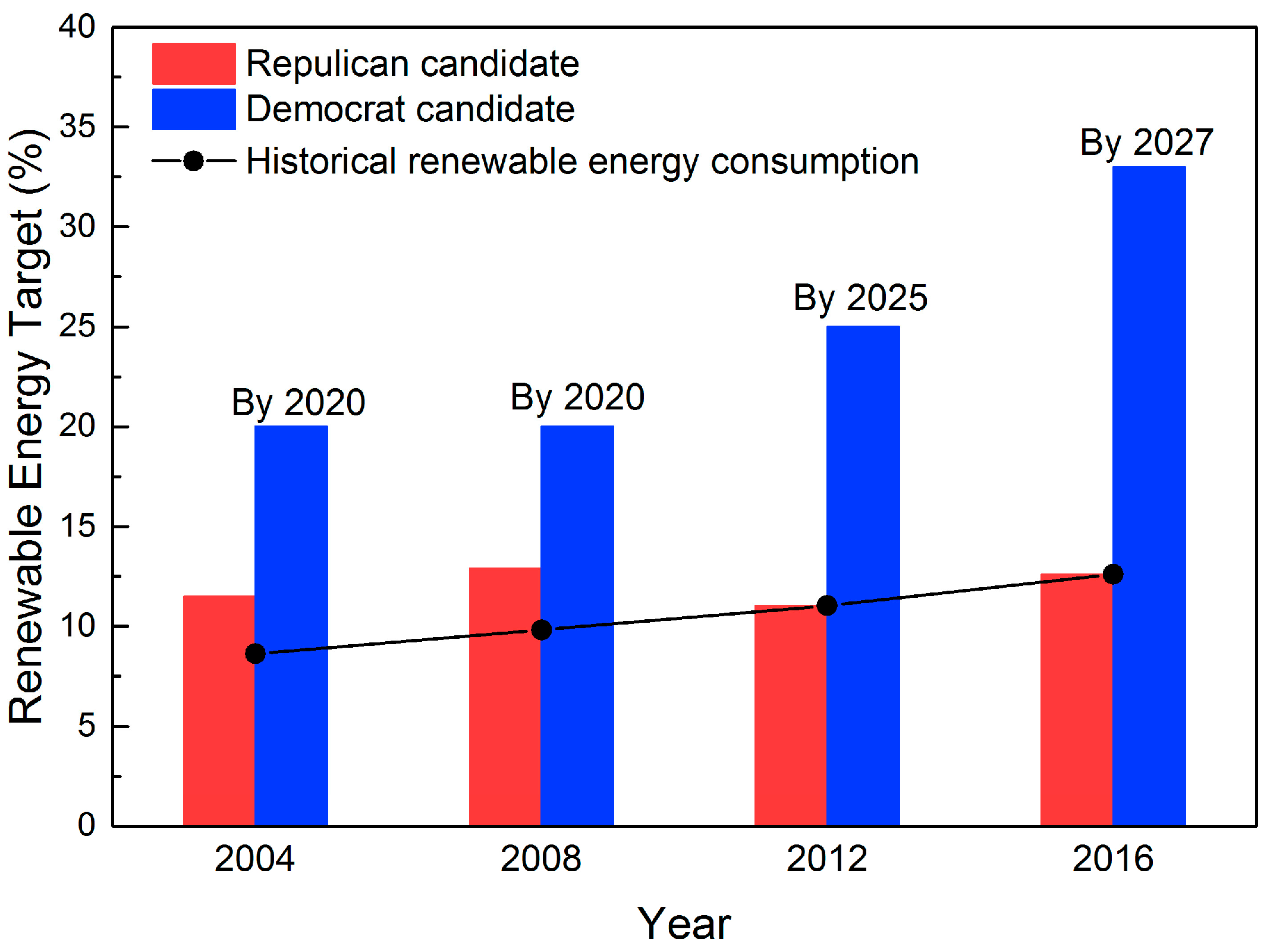American’s Energy Future: An Analysis of the Proposed Energy Policy Plans in Presidential Election
Abstract
:1. Introduction
2. Literature Review
3. Empirical Methodology and Data Collection
3.1. OLS Regression Model
3.2. Data Collection
3.3. Iowa Caucus Survey
4. Survey Results and Candidates’ Energy Visions
4.1. Democrats
4.1.1. Hillary Clinton
4.1.2. Bernie Sanders
4.2. Republicans
4.2.1. Donald Trump
4.2.2. Marco Rubio
4.2.3. Ted Cruz
5. Model Results and Discussion
5.1. Solar Energy
5.2. Renewable Energy
6. Conclusions and Policy Implications
Author Contributions
Conflicts of Interest
References
- Intergovernmental Panel on Climate Change. Climate Change 2014: Synthesis Report; Intergovernmental Panel on Climate Change: Geneva, Switzerland, 2014. [Google Scholar]
- United States Environmental Protection Agency. Overview of Greenhouse Gases. 2013. Available online: http://www3.epa.gov/climatechange/ghgemissions/gases/co2.html (assessed on 10 September 2015). [Google Scholar]
- Davis, F.L.; Wurth, A.H.; Lazarus, J.C. The green vote in presidential elections: Past performance and future promise. Soc. Sci. J. 2008, 45, 525–545. [Google Scholar] [CrossRef]
- Guber, D. The Grassroots of a Green Revolution: Polling America on the Environment; MIT Press: Cambridge, UK, 2003. [Google Scholar]
- Zaller, J. Report on 1991 Pilot Items on Environment; National Election Studies: Ann Arbor, MI, USA, 1992. [Google Scholar]
- Center for Climate Change and Energy Solution. Outcomes of the U.N. Climate Change Conference in Paris; Center for Climate Change and Energy Solution: Arlington, VA, USA, 2015. [Google Scholar]
- Bianco, N.; Igusky, K.; Gasper, R.; Obeiter, M.; Aden, N.; Forbes, S. By the Numbers: How the U.S. Economy Can Benefit from Reducing Greenhouse Gas Emissions. World Resource Institute, 2014. Available online: http://www.wri.org/blog/2014/10/numbers-how-us-economy-can-benefit-reducing-greenhouse-gas-emissions (assessed on 10 September 2015).
- Sutter, J.D.; Berlinger, J.; Ellis, R. Obama: Climate Agreement ‘Best Change We Have’ to Save the Planet. 14 December 2015. Available online: http://www.cnn.com/2015/12/12/world/global-climate-change-conference-vote/ (assessed on 28 February 2016).
- Ford, J. The election and the environment—1980. Environ. Sci. Policy Sustain. Dev. 1980, 22, 25–28. [Google Scholar] [CrossRef]
- Lanoue, D.J. Retrospective & schematic assessments of presidential candidates: The environement & the 1988 election. Polity 1993, 25, 547–563. [Google Scholar]
- Jeff, J. Environment emerges as key issue in 1996 election. Environ. Sci. Technol. 1995, 29, 541. [Google Scholar] [CrossRef]
- Baker, B. Washington watch: The environment as election issue. BioSci 1996, 46, 574. [Google Scholar] [CrossRef]
- DiPeso, J. The environment and the 2004 election. Environ. Qual. Manag. 2003, 13, 103–108. [Google Scholar] [CrossRef]
- Bergeson, L.L. Changing of the guard: Implications of the Democratic midterm election win on environment, energy, and resources legislation. Environ. Qual. Manag. 2007, 16, 89–93. [Google Scholar] [CrossRef]
- Layman, G.C.; Carsey, T.M.; Horowitz, J.M. Party polarization in American politics: Characteristics, causes and consequences. Annu. Rev. Political Sci. 2006, 9, 83–110. [Google Scholar] [CrossRef]
- Fiorina, M.P.; Abrams, S.J.; Pope, J.C. Culture War? The Myth of a Polarized America; Pearson Longman: New York, NY, USA, 2005. [Google Scholar]
- Abramowitz, A. Partisan Polarization and the Rise of the Tea Party Movement. APSA Annual Meeting Paper. 2011. Available online: http://ssrn.com/abstract=1903153 (assessed on 10 September 2015).
- Sundquist, J.L. Dynamics of the Party System: Alignment and Realignment of Political Parties in the United States; The Brookings Institution: Washington, DC, USA, 1983. [Google Scholar]
- Carmines, E.G.; Stimson, J.A. Issue Evolution: Race and the Transformation of American Politics; Princeton University Press: Princeton, NJ, USA, 1989. [Google Scholar]
- Poole, K.T.; Rosenthal, H. A spatial model for legislative roll call analysis. Am. J. Political Sci. 1985, 29, 357–384. [Google Scholar] [CrossRef]
- McCright, A.M.; Xiao, C.; Dunlap, R.E. Political polarization on support for government spending on environmental protection in the USA. Soc. Sci. Res. 2014, 48, 251–260. [Google Scholar] [CrossRef] [PubMed]
- Poole, K.T.; Rosentral, H. The polarization of American politics. J. Politics 1984, 46, 1061–1079. [Google Scholar] [CrossRef]
- Gallup Survey, U.S. Concern about Global Warming about Eight-Year High. Available online: http://www.gallup.com/poll/190010/concern-global-warming-eight-year-high.aspx (assessed on 10 September 2015).
- Guber, D.L. A cooling climate for change? Party polarization and the politics of global warming. Am. Behav. Sci. 2012, 57, 93–115. [Google Scholar] [CrossRef]
- Hillary, C.R. Making America the Clean Energy Superpower of the 21st Century. Available online: https://www.hillaryclinton.com/issues/climate/ (assessed on 10 September 2015).
- Bernie, S. Combating Climate Change to Save the Plant. Available online: https://berniesanders.com/people-before-polluters/invest-in-clean-sustainable-energy/ (assessed on 15 January 2016).
- O’Malley, M. Clean Energy Future. A Job Agenda for Our Renewable Energy Future. 2015. Available online: http://martinomalley.com/policy/clean-energy-future/ (assessed on 10 September 2015).
- Yi, H.; Feiock, R.C. Renewable energy politics: Policy typologies, policy tools, and state deployment of renewables. Policy Stud. J. 2014, 42, 391–415. [Google Scholar] [CrossRef]
- Bentzen, J.; Engsted, T. A revival of the autoregressive distributed lag model in estimating energy demand relationships. Energy 2001, 26, 45–55. [Google Scholar] [CrossRef]
- U.S. Census Bureau. Population Projection. Available online: http://www.census.gov/population/projections/data/national/2014/summarytables.html (assessed on 10 September 2015).
- Bureau of Labor Statistics. Income. Available online: http://www.bls.gov/emp/ep_table_410.htm (assessed on 10 September 2015).
- The Statistical Portal. GDP Projection. Available online: http://www.statista.com/statistics/216985/forecast-of-us-gross-domestic-product/ (assessed on 10 September 2015).
- U.S. Energy Information Administration. Annual Energy Outlook 2015. 2015. Available online: https://www.eia.gov/forecasts/aeo/section_elecgeneration.cfm (assessed on 10 September 2015). [Google Scholar]
- National Environmental Scorecard 2000–2015. League of Conservation Voters. Available online: http://scorecard.lcv.org/ (assessed on 26 October 2016).
- Wold Energy Source. Trump on Energy in Politics. Available online: http://www.worldenergysource.com/worldenergy-blog/trump-on-energy-in-politics (assessed on 15 January 2016).
- Marco, R. Powering the New American Century. Available online: https://marcorubio.com/issues-2/energy-policy-proposals/ (assessed on 15 January 2016).
- Ted, C. Job and Opportunity, Energy Renaissance. Available online: https://www.tedcruz.org/issues/jobs-and-opportunity/ (assessed on 15 January 2016).
- Solar Income Tax Credit. Solar Energy Industries Association. Available online: http://www.seia.org/policy/finance-tax/solar-investment-tax-credit (assessed on 10 September 2015).
- Forbes. Business/Energy. Available online: http://www.forbes.com/energy/#f4911ca193a2 (assessed on 10 September 2015).
- Johnson, A. How Many Solar Panels Do I Need on My House to Become Energy Independent? 19 November 2013. Available online: http://engineering.mit.edu/ask/how-many-solar-panels-do-i-need-my-house-become-energy-independent (assessed on 10 September 2015).
- Kann, S. Green Technology Media: Solar. Can the US Reach Hillary Clinton’s New Solar Goal? Available online: http://www.greentechmedia.com/articles/read/can-the-us-reach-hillary-clintons-new-solar-goal (assessed on 10 September 2015).
- U.S. Energy Information Administration. Annual Energy Outlook. 2016. Available online: http://www.eia.gov/forecasts/aeo/pdf/0383(2016).pdf (assessed on 31 October 2016). [Google Scholar]
- Biek, R. Newsy.com. What’s Wrong with Hillary Clinton’s Solar Panel Plan? Available online: http://www.newsy.com/videos/what-s-wrong-with-hillary-clinton-s-solar-panel-plan/ (assessed on 10 September 2015).
- Mathiesen, K. The Guardian.com. Is Hillary Clinton’s Ambitious Solar Energy Goal for the US Workable? Available online: http://www.theguardian.com/environment/2015/jul/28/is-hillary-clintons-ambitious-solar-energy-goal-for-the-us-workable (assessed on 10 September 2015).
- Department of Energy. A Record Year for the American Wind Industry. Available online: http://www.energy.gov/articles/record-year-american-wind-industry (assessed on 15 January 2016).
- Fortune, Leadership. Available online: http://www.fortune.com/2016/11/10/donald-trump-climate-change-paris-agreement/ (assessed on 20 November 2016).
- On The Issues, John Kerry on Energy and Oil. Available online: http://www.ontheissues.org/2004/John_Kerry_Energy_+_Oil.htm (assessed on 13 August 2016).
- The New York Times. Election 2008, On the Issue: Energy. Available online: http://elections.nytimes.com/2008/president/issues/energy.html (assessed on 13 August 2016).
- PolitiFact. Promises about Energy on the Obameter. Available online: http://www.politifact.com/truth-o-meter/promises/obameter/subjects/energy/ (assessed on 13 August 2016).
- Bresswein, K. Presidential Race 2012: Barak Obama and Mitt Romney Energy Policies Boken Down. 2012. Available online: http://www.lehighvalleylive.com/elections/index.ssf/2012/10/2012_barack_obama_mitt_romney.html (assessed on 13 August 2016).




| Year | Senate | House | ||
|---|---|---|---|---|
| Republican | Democrat | Republican | Democrat | |
| 2000 | 8.34 | 81.07 | 13.68 | 77.05 |
| 2004 | 7.72 | 83.31 | 11.29 | 87.16 |
| 2008 | 22.60 | 88.40 | 16.63 | 89.42 |
| 2012 | 13.93 | 88.30 | 9.83 | 81.74 |
| 2013 | 17.26 | 90.18 | 5.60 | 86.45 |
| 2014 | 9.33 | 72.45 | 4.26 | 87.07 |
| 2015 | 5.26 | 91.81 | 3.47 | 90.62 |
© 2016 by the authors; licensee MDPI, Basel, Switzerland. This article is an open access article distributed under the terms and conditions of the Creative Commons Attribution (CC-BY) license (http://creativecommons.org/licenses/by/4.0/).
Share and Cite
Cheng, M.-H.; Yang, M.; Wang, Y. American’s Energy Future: An Analysis of the Proposed Energy Policy Plans in Presidential Election. Energies 2016, 9, 1000. https://doi.org/10.3390/en9121000
Cheng M-H, Yang M, Wang Y. American’s Energy Future: An Analysis of the Proposed Energy Policy Plans in Presidential Election. Energies. 2016; 9(12):1000. https://doi.org/10.3390/en9121000
Chicago/Turabian StyleCheng, Ming-Hsun, Minliang Yang, and Yu Wang. 2016. "American’s Energy Future: An Analysis of the Proposed Energy Policy Plans in Presidential Election" Energies 9, no. 12: 1000. https://doi.org/10.3390/en9121000






